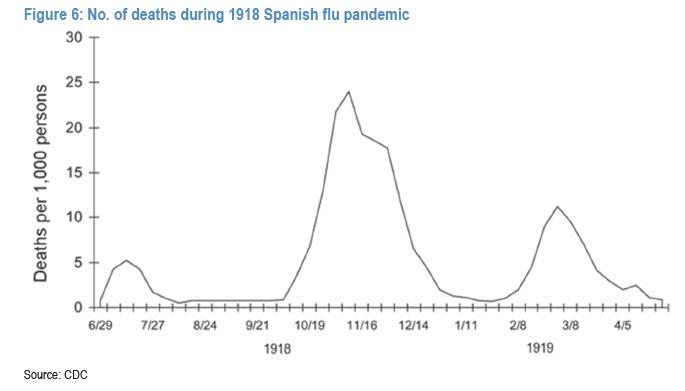Submitted by Harvard to the Big House
An accessible YouTube summary of much of the report below below by a Professor of Neurobiology at the University of Pittsburgh’s Medical School is available here.
“You can tell you’ve found a really interesting question when no one wants you to answer it.”
Over the past several months thousands of humans have lost their lives since COVID-19 kicked-off its killing spree in Wuhan, and barring an absolute miracle millions more all across the planet will join them in the months to come. Comparisons to the pandemic caused by the Spanish Flu earlier in the twentieth century abound, however one thing is clear: Whether due to globalization or to internal differences between the viruses, while the Spanish Flu was a slow-moving miasma that took years to unfurl across the globe, the Wuhan strain of coronavirus, COVID-19, has blanketed the entire planet in just a few months.
Factories all across the planet have ground to a halt, stores are shuttered, tens of millions are quarantined across multiple continents, and supply chains are disintegrating.
And oddly, even though there is nothing even beginning to approach conclusive evidence that COVID-19 was a naturally emergent strain that made its way out of an intermediate animal host and into humans, the general consensus in the media and the public seems to be that exploring its origins is something only done by people who’ve yet to buy that the Earth is in fact round and that we actually did land on the moon. And everyone seems to be okay with the fact that the scientists crowing the loudest about a natural origin, are the ones directly involved with the type of research that likely spawned this virus: Gain-of-function, or “dual-use” research that meant to push Nature past her limits, so that humans can harness her to create monsters that would never occur naturally.
Why the concentrated push to marginalize anyone asking for conclusive proof about where COVID-19 came from? Who benefits?
“We modified our science team to remove ethical restraints.”
Back in 1977 a very peculiar disease began to sweep across Russia, and once scientists had isolated it they discovered it was a rather unique strain of the H1N1 Swine Flu. In the years that followed genetic analysis looking to determine where it might’ve come from found something rather odd: It was very similar to strains of H1N1 that hadn’t been in circulation for decades, and seemed to be the product of “sequential passage in an animal reservoir” which was determined by its vast genetic distance from any other present strain of flu, just like COVID-19 which also appears so distant from any related coronavirus that it’s been placed in its own clade, an isolated branch way out on its own in the viral family tree – meaning it’s the lone example of its kind, and doesn’t clump together with all the other known coronaviruses.
At the time, the Soviet Union was employing tens of thousands of scientists designing every possible flavor of biological weapon, a rabidly immoral weapons program with a spotty safety record – pathogens were known to leak out of Soviet labs almost regularly. Which has happened at plenty of biological weapons labs since, but especially China’s, which have leaked the SARS virus four times just in recent years. And Soviet scientists were reported to bring dead research animals home for dinner, meat wasn’t exactly readily available in the USSR at that time, which parallels the reports of scientists in Wuhan smuggling dead lab animals out to sell for a few extra bucks on the street.
Earlier in the 70’s prior to the leak, “the swine flu scare… [had] prompted the international community to reexamine their stocks of the latest previously circulating H1N1 strains to attempt to develop a vaccine,” which was seen to have increased the odds that someone, somewhere would make a mistake and leak an altered strain of the flu out of their lab. This increased pace of research mirrors recent times, when scientists have been investigating and trying to understand the supposedly impending threat posed by coronaviruses for years, capturing as many unique strains from the wild as they could, and mixing and matching their genomes in the lab.







No comments:
Post a Comment